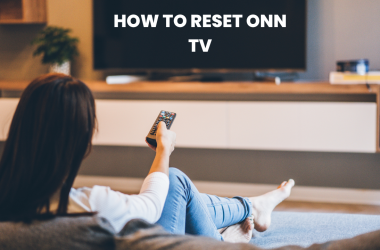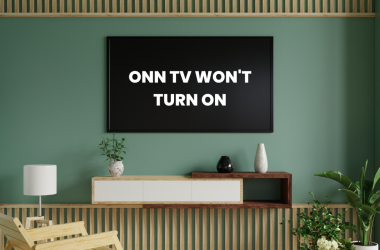Connecting a soundbar to your Samsung TV is one of the best ways to elevate your home entertainment experience. Whether you want richer audio for movies, gaming, or streaming, the right setup can transform your TV’s sound quality from mediocre to immersive. But with multiple connection options like HDMI ARC, optical cables, and Bluetooth, it can feel confusing, especially if you’re not a tech expert.
In this definitive guide, we’ll walk you through everything you need to know to connect soundbar to Samsung TV perfectly. From understanding your TV’s audio output options, selecting the right cables, troubleshooting common issues, to optimizing your settings for the best sound, you’ll get a clear, step-by-step roadmap.
1. Why Connect a Soundbar to Your Samsung TV?
The built-in speakers on most Samsung TVs are designed to be slim and space-saving — which often means compromised sound quality. Adding a soundbar gives you:
- Improved audio clarity and bass response
- More immersive surround sound experience
- Better volume and dynamic range
- Simplified setup compared to full home theater systems
Soundbars are sleek, easy to install, and compatible with most Samsung TVs, making them the go-to choice for upgrading TV audio.
Read Also: Universal Remote Codes For SANYO TV
2. Understanding Samsung TV Audio Output Options
Before connecting your soundbar, it’s important to identify which audio outputs your Samsung TV supports. Here are the main options:
- HDMI ARC (Audio Return Channel):
Allows both audio and video signals over one HDMI cable and supports advanced audio formats like Dolby Digital. ARC is widely recommended for modern setups. - Optical (TOSLINK) Audio Port:
Uses fiber optic cables to transmit digital audio. It supports surround sound but lacks some advanced features of HDMI ARC. - Bluetooth:
Wireless audio transmission for compatible Samsung TVs and soundbars. Convenient but sometimes prone to audio lag. - 3.5mm Headphone Jack / RCA (Analog):
Older TVs or basic models may provide these, but the audio quality and features are limited.
How to Check Your Samsung TV Audio Outputs
- Locate the ports on the back or side of your TV.
- Consult the Samsung TV manual or visit Samsung’s official support site with your model number.
3. Types of Soundbars Compatible with Samsung TVs
Soundbars come in various forms, and choosing the right one depends on your TV’s outputs and your preferences:
- Wired Soundbars: Connect via HDMI ARC or optical cable for stable, high-quality sound.
- Wireless/Bluetooth Soundbars: Ideal for minimal cables but can experience occasional lag or connection drops.
- Smart Soundbars: With built-in voice assistants and Wi-Fi, allowing additional features and integration.
- Samsung Branded vs Third-Party: Samsung soundbars often integrate more seamlessly with Samsung TVs, including remote control and SmartThings app support.
4. How to Connect Soundbar to Samsung TV Using HDMI ARC
HDMI ARC is the preferred connection method for most Samsung TVs and soundbars because it supports high-quality digital audio and simplifies wiring.
Step-by-Step HDMI ARC Connection:
- Locate the HDMI ARC port on your Samsung TV — usually labeled “HDMI ARC.”
- Connect an HDMI cable from the TV’s HDMI ARC port to the HDMI ARC port on your soundbar.
- Turn on your TV and soundbar.
- On your Samsung TV, navigate to:
Settings > Sound > Sound Output > Receiver (HDMI)orHDMI ARC(the exact menu may vary by model). - Enable Anynet+ (HDMI-CEC):
Settings > General > External Device Manager > Anynet+ (HDMI-CEC) > On— this allows the TV remote to control the soundbar volume. - Test the audio output — sound should now play through your soundbar.
Troubleshooting HDMI ARC Issues:
- Ensure the HDMI cable is High-Speed with Ethernet certified for ARC support.
- Restart both devices if sound isn’t detected.
- Check if Anynet+ (HDMI-CEC) is enabled on your TV and soundbar.
- Confirm TV audio output is set to ARC/Receiver.
5. How to Connect Soundbar to Samsung TV Using Optical Cable
If your TV or soundbar lacks HDMI ARC, optical cable is the next best digital option.
Step-by-Step Optical Connection:
- Find the optical audio output port on your Samsung TV (labeled “Optical Out” or “Digital Audio Out”).
- Connect one end of the optical cable to the TV and the other to the soundbar’s optical input.
- On your TV, go to:
Settings > Sound > Sound Output > Audio Out/Optical. - Set the Digital Output Audio Format to PCM or Bitstream depending on your soundbar’s compatibility.
- Turn on both devices and test the sound.
Tips for Optical Connection:
- Optical cables only carry audio, so video is unaffected.
- Audio delay may occur; check your soundbar’s settings for lip-sync adjustment.
- Optical doesn’t support volume control via TV remote in some cases.
6. Connecting Soundbar via Bluetooth
Many modern Samsung TVs support Bluetooth audio, letting you connect wirelessly to a Bluetooth-enabled soundbar.
How to Pair:
- Put your soundbar into Bluetooth pairing mode (refer to the soundbar manual).
- On your Samsung TV, navigate to:
Settings > Sound > Sound Output > Bluetooth Speaker List. - Select your soundbar from the list of available devices.
- Once connected, sound will stream wirelessly.
Pros and Cons of Bluetooth Connection:
- Pros: No cables, clean setup.
- Cons: Possible audio lag, interference, and sometimes lower audio quality.
7. Using Analog Audio Connections (3.5mm or RCA)
Analog connections like a 3.5mm headphone jack or RCA cables are less common for soundbars but may be needed with older TVs or basic models.
How to Connect:
- Use a 3.5mm-to-RCA cable or a 3.5mm audio cable if both devices support it.
- Plug into the TV’s headphone out or audio out port and the soundbar’s analog input.
- Set TV audio output to external speakers or headphones.
Limitations:
- Analog connections do not support surround sound or advanced audio formats.
- Sound quality is usually inferior to digital connections.
8. Control Your Soundbar with Samsung SmartThings App
Samsung’s SmartThings app offers convenient control over your TV and soundbar from your smartphone.
Features:
- Pair and control soundbar volume, input selection, and power.
- Create custom audio presets.
- Sync multiple Samsung smart devices.
Download the SmartThings app from the Google Play Store or Apple App Store.
9. Optimize Samsung TV Audio Settings for Soundbars
To ensure the best sound experience, tweak your TV’s audio settings:
- Turn off the TV speakers:
Settings > Sound > Sound Output > Receiver (HDMI) / Soundbar - Enable Dolby Digital or surround sound passthrough:
Settings > Sound > Expert Settings > Digital Output Audio Format > Dolby Digital - Adjust Audio Delay (Lip Sync): Synchronize audio and video perfectly.
- Enable Anynet+ (HDMI-CEC): For seamless control between devices.
10. Troubleshooting Common Connection Problems
- No sound from soundbar: Check cable connections, select correct audio output on TV, and ensure soundbar is powered on.
- Soundbar not detected via HDMI ARC: Enable Anynet+, use certified HDMI cables, reboot devices.
- Audio delay or echo: Adjust lip-sync settings on TV or soundbar.
- Bluetooth disconnects: Reduce interference, keep devices close, reset pairing.
- TV remote volume control not working: Confirm HDMI-CEC is enabled and compatible soundbar model is used.
11. Enhancing Your Soundbar Audio Experience
- Position your soundbar directly below or above your TV for optimal sound distribution.
- Keep the soundbar away from obstructions.
- Update firmware regularly on both soundbar and TV.
- Add external subwoofers if your soundbar supports it for richer bass.
12. Connecting Multiple Devices to Your Soundbar
Many soundbars have multiple input ports (HDMI, optical, AUX) allowing you to connect:
- Gaming consoles (PlayStation, Xbox)
- Blu-ray players
- Streaming devices (Roku, Apple TV)
Use your soundbar’s input selector to switch between devices without unplugging.
13. Samsung vs Third-Party Soundbars: What to Know
- Samsung Soundbars: Seamless integration with Samsung TVs, remote control compatibility, SmartThings app support.
- Third-Party Soundbars: Often offer competitive features and prices but may lack full integration. Brands like Sonos, Bose, JBL are popular.
- Compatibility depends on supported audio inputs and control protocols.
14. Recommended Soundbars for Samsung TVs in 2025
| Model | Features | Price Range | Best For |
|---|---|---|---|
| Samsung HW-Q990C | Dolby Atmos, 11.1.4 channels | High-End | Ultimate immersive audio |
| Samsung HW-Q800C | Dolby Atmos, Wireless Subwoofer | Mid-Range | Balanced performance |
| Sonos Beam Gen 2 | Smart soundbar, voice control | Mid-Range | Smart home integration |
| Vizio M-Series M51a-H6 | Dolby Atmos, budget-friendly | Budget | Affordable surround sound |
15. Connecting Older Samsung TVs to Modern Soundbars
Older Samsung TVs may lack HDMI ARC or optical ports. Options include:
- Using analog audio connections (3.5mm or RCA).
- Using HDMI audio extractors/converters to get ARC functionality.
- Upgrading TV firmware if supported.
16. ARC vs eARC: What Samsung TV Users Should Know
- ARC (Audio Return Channel): Supports up to 5.1 surround sound, common in TVs before 2018.
- eARC (Enhanced ARC): Supports higher bandwidth, lossless audio, and Dolby Atmos. Available on newer Samsung TVs and soundbars.
Use eARC if you want top-tier audio quality, but confirm both devices support it.
Read Also: 9Anime Alternatives
17. Updating Samsung TV Firmware for Better Audio
Samsung regularly releases firmware updates improving features and fixing bugs:
- Go to
Settings > Support > Software Update > Update Now. - Keep your TV connected to the internet for automatic updates.
- Updates may improve soundbar compatibility and add new audio features.
18. Resetting Samsung TV Audio Settings
If you face persistent audio problems:
- Navigate to
Settings > Sound > Expert Settings > Reset Sound. - This resets audio settings without affecting other TV data.
- For full reset, use
Settings > Support > Self Diagnosis > Reset.
Connect Soundbar To Samsung TV FAQs
Q1: Can I connect multiple soundbars to one Samsung TV?
A: Typically, TVs support output to only one audio device at a time. You can switch between soundbars but not use multiple simultaneously.
Q2: Why does my soundbar disconnect from Bluetooth frequently?
A: Interference, distance, or low battery on soundbar remote can cause disconnections. Keep devices close and clear of obstacles.
Q3: How do I fix no sound from soundbar when using HDMI ARC?
A: Check HDMI cables, enable Anynet+ (HDMI-CEC), select correct audio output on TV, and restart devices.
Q4: Can I use Samsung TV remote to control soundbar volume?
A: Yes, if HDMI ARC and Anynet+ are enabled, and the soundbar supports HDMI-CEC.
Q5: Does Samsung TV support Dolby Atmos on soundbars?
A: Newer Samsung TVs with eARC support Dolby Atmos passthrough to compatible soundbars.
Q6: How to enable surround sound through Samsung TV and soundbar?
A: Set TV audio output to Bitstream or Dolby Digital and enable surround sound on the soundbar.
Q7: What to do if the soundbar audio is out of sync?
A: Adjust the audio delay or lip-sync settings on TV or soundbar.
Q8: Can I connect a soundbar to Samsung TV without optical or HDMI ARC?
A: Yes, using analog cables (3.5mm or RCA), but with limited sound quality.
Q9: What cables do I need to connect a soundbar to a Samsung TV?
A: Typically HDMI ARC cable, optical (TOSLINK) cable, or Bluetooth for wireless.
Q10: How to connect a Samsung soundbar to a non-Samsung TV?
A: Use HDMI ARC, optical, or Bluetooth depending on the TV’s supported outputs.
Conclusion
Connecting a soundbar to your Samsung TV doesn’t have to be complicated. Whether you choose HDMI ARC for the best audio quality or Bluetooth for convenience, following the right steps ensures a richer, more immersive sound experience that makes every movie, game, or show feel cinematic. Regularly updating your devices, tweaking audio settings, and using quality cables further optimizes your setup. Choose a soundbar that fits your needs and enjoy premium sound without the hassle of a complicated home theater.


![How to Connect Soundbar To Samsung TV [6 Easy Methods] 1 How-to-Connect-Soundbar-To-Samsung-TV-6-Easy-Methods](https://smarttvmaster.com/wp-content/uploads/2024/03/How-to-Connect-Soundbar-To-Samsung-TV-6-Easy-Methods-800x450.png)


![How to Connect Vizio TV to WiFi Without Remote [4 Ways] 12 How-to-Connect-Vizio-TV-to-WiFi-Without-Remote-[4-Ways]](https://smarttvmaster.com/wp-content/uploads/2024/08/How-to-Connect-Vizio-TV-to-WiFi-Without-Remote-4-Ways-380x250.png)
![Where is the Reset Button on Hisense TV [4 Different Ways] 13 Where-is-the-Reset-Button-on-Hisense-TV-[-4-Different-Ways]](https://smarttvmaster.com/wp-content/uploads/2024/02/Where-is-the-Reset-Button-on-Hisense-TV-4-Different-Ways-380x250.png)